General topics
A Unique Cannabis-Fitness Journey in Amsterdam
Published
2 years agoon
By
admin
Amsterdam’s Unconventional Athlete
In the bustling heart of Amsterdam, a city globally renowned for its art, canals, coffee shops, and liberal attitudes, a man named Fred has carved a niche for himself. Known for his passionate love for swimming and an occasional indulgence in cannabis, Fred embodies the vibrant character of the city. But what sets him apart from the millions inhabiting the Dutch capital is not just his hobbyist pursuits, but the unique, seemingly paradoxical blend he has created between them.
Fred’s story begins on a typical day in Amsterdam. The city awakens to the distant toll of church bells, the streets quickly filling with cyclists as aromatic smoke wafts from the coffee shops lining the canals. In the midst of this energetic morning rhythm, Fred dives into one of the city’s iconic canals for his daily swim.
The Cannabis-Swimming Symbiosis
Amsterdam, with its intertwining canals, serves as an excellent setting for swimming enthusiasts. The pristine waters that run through the city like veins are not just an urban luxury for Fred but a vast canvas where he meticulously practices his exercise regimen. While the combination of swimming and cannabis may sound peculiar to most, Fred has discovered an extraordinary symbiosis between the two. According to him, this practice not only enhances his focus but significantly augments his performance during training sessions.
Fred’s unique approach to his physical routine starts at home. He lights up a joint, savoring the moment, and allowing the cannabis to exert its effects. He then slips into his swimming gear, his senses heightened, and makes his way to the nearest canal for his daily swim. Each stroke in the water, he says, feels amplified, purposeful, and synchronized, allowing him to practice with a level of concentration he otherwise finds elusive.

Cannabis and Athletics: A Growing Interest
While Fred’s unique practice of combining cannabis with swimming might seem unconventional to many, it’s far from baseless. His experiences are a part of a growing body of anecdotal evidence and preliminary research that suggests a potential relationship between cannabis use and physical activity.
Athletes across various disciplines, diverse backgrounds, and different fitness levels have reported experiencing positive psychological effects from their cannabis use in conjunction with their physical activities. Surfers harnessing the formidable power of Pacific waves, ultramarathoners enduring torturous terrains, and climbers tackling imposing vertical challenges have all echoed sentiments similar to Fred’s. They note increased mental focus, a heightened sense of connection with their activities, and an improved ability to overcome pain, discomfort, and even fatigue, under the influence of cannabis.
One compelling testament to the potential benefits of cannabis in sports comes from a professional triathlete who goes by the initials C. D. He credits cannabis for its ability to slow down his thought processes, allowing him to evaluate incoming stimuli individually, rather than being overwhelmed. According to him, cannabis induces a rhythmic beat in his mind that guides his pace during his runs, almost acting as a metronome. His experience points to the potential of cannabis in fostering a meditative, highly focused state that might be conducive to intense physical activities.
C.D.’s account is not an isolated incident, but part of a growing chorus of voices in the sporting world. There are numerous reports from athletes who feel that cannabis helps them enter a ‘flow’ state—a state of immersive focus and enhanced performance. This ‘flow’ state, or being ‘in the zone,’ is often associated with peak performances in athletics.
This burgeoning interest in the intersection of cannabis and sports is sparking more in-depth scientific research. The initial anecdotal accounts have paved the way for more rigorous explorations, looking to substantiate or refute these early observations. This quest for understanding is fueled by the necessity to provide athletes and fitness enthusiasts with informed, science-backed advice on the potential risks and benefits of integrating cannabis into their routines.
Fred, C. D., and many others are thus both participants in and beneficiaries of a wider cultural and scientific movement. It is a movement that has begun to challenge traditional notions of athletic performance and wellness, potentially opening the doors to a new era of sports science.

Unraveling the THC-Physical Activity Link
The link between THC—the psychoactive chemical in cannabis—and physical activity has piqued researchers’ interest. THC interacts with the endocannabinoid system in our body, which is involved in a variety of physiological processes including appetite, pain sensation, mood, and memory. Given its physiological reach, it’s plausible to think that THC can impact athletic performance and recovery.
A pioneering study is currently underway, aiming to shed light on why many individuals, like Fred, resort to cannabis before, during, or after their workouts. Such research could lead to fascinating insights into the interaction between cannabis and exercise, potentially reshaping our understanding of sports medicine and exercise science.
Rethinking the ‘Runner’s High’
The euphoric feeling often experienced during intense physical activity, often referred to as the ‘runner’s high,’ has been attributed to the release of endorphins, opioid-like hormones produced by our body. This blissful state is said to make exercise pleasurable, promoting a sense of well-being and happiness.
However, Josiah Hesse, in his book “Runner’s High,” explores the subculture of amateur and elite athletes who use cannabis for exercise, suggesting an alternative viewpoint. Hesse proposes that the ‘runner’s high’ might not be solely a product of endorphins but could be influenced by the body’s endocannabinoid system—the same system that interacts with THC in cannabis. If this theory holds water, it could explain why cannabis might enhance the pleasure derived from exercise.

Amsterdam: The Perfect Canvas for the Cannabis-Fitness Study
Amsterdam, fondly known as the Venice of the North, is a city built on a network of canals. These waterways, threading their way through the urban landscape, have been a central feature of the city’s identity since the Dutch Golden Age. However, in the context of our story, they serve a dual purpose. They are not just picturesque, historical landmarks but swimming tracks for fitness enthusiasts like Fred.
The liberal attitudes towards cannabis use that prevail in Amsterdam further contribute to making it an ideal setting for the exploration of cannabis-fitness phenomena. The city’s numerous coffee shops, where the consumption of cannabis is legalized and regulated, are an integral part of Amsterdam’s unique urban culture. These locales serve as accessible platforms for residents and tourists alike to responsibly explore cannabis’s effects.
In this regard, the city provides an ideal, open-air laboratory where the interaction of cannabis and fitness can be studied in a real-world, pragmatic setting. The instances of athletes, like Fred, integrating cannabis into their fitness routines are not isolated. They are part of a larger trend within the city, creating a rich dataset for researchers and enthusiasts alike. This unique environment allows for a more nuanced understanding of the phenomenon, considering various elements such as the dosage, strain, timing of cannabis use, type of exercise, and individual responses.
A New Perspective on Cannabis and Fitness
While the health impacts of smoking marijuana are well-documented, there’s a growing narrative that challenges the established perspective. This emerging counter-narrative revolves around the potential benefits of getting high before engaging in physical activities like running—or in Fred’s case, swimming. It’s pushing boundaries and stirring debates, leading to a more nuanced conversation about cannabis’s role in fitness and sports.
The underlying message is not about promoting or glorifying drug use. Rather, it’s about acknowledging and exploring the effects of cannabis on physical performance and recovery. There’s an emphasis on ‘responsible use’ that aligns with the goal of enhancing athletic performance or making the exercise experience more enjoyable.
This narrative does not undermine the risks associated with smoking. Smoking, regardless of whether it’s tobacco or marijuana, involves combustion, which inevitably leads to the production of harmful by-products. The conversation here is more about the active compounds in cannabis and their potential effects on the body during physical activity, regardless of the method of consumption.
Therefore, many athletes who are interested in exploring cannabis for its potential benefits prefer safer alternatives to smoking. Vaping, for instance, heats the cannabis to a point where the active compounds are released, but the plant material does not burn. This method is perceived to be less harmful because it produces fewer harmful by-products. Edibles, tinctures, and topical applications of cannabis are other methods that athletes use to avoid the potential harms of smoking.
The challenge and opportunity moving forward lie in conducting comprehensive, well-controlled studies to further understand cannabis’s role in fitness. We need to unravel the complexities of cannabis use in sports, address safety and ethical concerns, and provide clear, evidence-based guidelines for athletes who wish to explore cannabis as part of their fitness journey. As we navigate through this uncharted territory, it’s imperative that we approach the topic with an open mind, a respect for scientific rigor, and a commitment to public health and safety.

Closing Thoughts: The Future of Cannabis in Sports
Fred’s approach to swimming is a mirror held up to Amsterdam’s spirit—a compelling blend of liberality and a passion for fitness. His practice is emblematic of the complexity of human experience and our constant pursuit of discovering unique, and sometimes unconventional, ways to enhance performance and enjoy the activities we love.
As we continue to explore the intersection of cannabis and sports, we stand at the precipice of a new era in sports medicine, exercise science, and health. With further research and open dialogue, we edge closer to understanding the unconventional, yet intriguing relationship between cannabis and sports. The hope is that we’ll be able to leverage it responsibly, for both recreational athletes and professionals, to potentially enhance their performance or make their physical activities more enjoyable.
In the end, Fred’s story isn’t just about a man who enjoys swimming high. It’s a narrative that challenges conventions, explores uncharted territories, and may eventually change the way we perceive fitness, sports, and cannabis.
Disclaimer: This content is meant for educational purposes only. It has been compiled with research from external sources. it is not meant to substitute any medical or legal advice. Please see your local laws for the legality of cannabis use.
You may like
-


Cannabis Can Help A Sore Throat
-


Cannabis and the Authoritarian State
-


As cannabis consumer tastes evolve, industry must look beyond potency
-


Article: Early 2025 Empire State Psychedelic Policy Roundup
-


White House Finally Comments On Marijuana Industry
-


Stop Using Bat Poop to Fertilize Your Weed Plants Immediately, Here is Why…
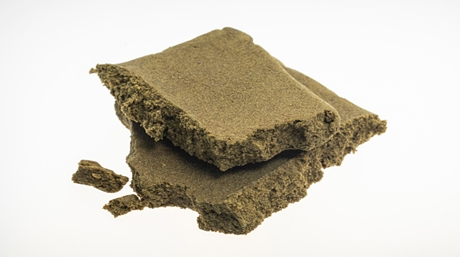
Many people often wonder how they can make cannabis hashish. Popularly shortened to hash, it is an Arabic name that means grass. Over countless years, this concentrate from the cannabis plant has been utilized by many cultures for its beneficial properties.
Today, the growing curiosity about how to make cannabis hash prompts us to come up with an ultimate guide on how the process can be done in a straightforward manner.
Producing hash requires separating cannabis bud trichomes from the other plant parts. In female cannabis plants, there are frosty white hairy-like structures. In this case, that’s what we refer to as trichomes. These parts are highly abundant in THC, which is why they are the most desired part of the plant. Remember that to come up with viable hashish, you must extract substantial amounts of THC.
Kief vs. hashish
Hashish doesn’t come merely from the separation of trichomes. The important factor at this point is kief. Kief is the raw material that aids in the production of hashish. When heat and pressure are applied to kief, hashish comes into existence.
Making kief into hash
From kief, it’s easy to come up with hash. There are two ways in which one can complete the process:
• Pollen pressing
• The heat and pressure method.
The pollen processing method
Pollen Processing involves placing kief in a press. Next, you apply firm pressure to make it moldable. By applying direct pressure to the kief, you will create a basic hash (really a kief puck). This method makes it easier to come up with a puck of hash.
However, this method has disadvantages. The flavors do not get a chance to develop, as there is no heat used in the process. The heat assists in developing and maintaining the flavors of the hash in its finished form. Heating and applying pressure to kief gives you a higher-quality hash.
The heat and pressure method
You can use the puck that you created above, or you can use cellophane to wrap kief and use a rolling pin to apply pressure and create a puck. Just keep gently applying pressure until the kief is at the density and shape that you want. You can continue to do this as long as you want. You can also let it sit for a day or two so that all of the flavors meld together. When you are ready, remove the cellophane.
Once you have created a kief puck using a pollen press, to do the heat and pressure method, you will need to gently heat the kief. You will want to wrap the puck in a wet paper towel. You will then wrap the kief in a wrap that can withstand being in a 93 – 137°C (200 – 280°F) oven. A good cooking parchment paper will be perfect for this application.
Place the parchment paper and its contents in an oven set somewhere between 93 – 137°C (200 – 280°F). Make sure that the contents do not spill out. Having a baking sheet handy would be very helpful here. Place the package in your oven for 5-10 minutes. Unwrap the package. Rewet your paper towel, re-press your puck using the method above, and then rewrap it in parchment paper. Place this in the oven again for 5-10 minutes. Repeat the process. You want to do this whole process at least three times. Let it cool overnight or by placing the product in your fridge or freezer.
The pressure and heat method will produce a superior hash.
Methods used in the production of hashish
There are other different methods used in coming up with hash. However, these ways give different potency levels.
It is also worth mentioning that different cannabis plants have different cannabinoid levels. That said, they can produce varied qualities of hash depending on the marijuana strain used. There are quite a few methods used to make cannabis hash. Nonetheless, we are going to give the three most used and cheap to try at home.
1. Finger production method
This could be described as the easiest method for producing hash. As one harvests ganja from the cannabis plants, there may be instances where it sticks to the palms and the fingers.
The method involves placing a can or jar and rubbing your hands and fingers together over the can so that it collects the parts of the buds that stick to your hands. This can then be used to produce hash by rubbing your hands together vigorously. The heat and pressure produced during rubbing aid in combining the mixture into hash. However, this type of hash is described as having low quality. There may also be contamination coming from sweat and dirt on your hands.
The obtained hash may have off-flavors and unpredictable effects, which is a negative.
2. Silkscreen
This method involves sieving cannabis trichomes through a silk screen. Depending on your preference, you can opt to make your silkscreen or purchase one. Either way, note that the cannabis plant parts must be trimmed into very tiny sizes through this screen.
That said, you also need to ensure that you see the trichomes and collect them painstakingly. The finer the silkscreens that you use, the higher the probability of coming up with finely produced hashish.
One can opt to use the remains to sieve them further. However, the kief obtained from the get-go usually has mostly potent hashish. Depending on the amount of hash needed, a single silkscreen is under most circumstances sufficient to come up with a substantial amount of hash.
3. Blender method
The blender method relies heavily on probability. The colder the trichomes, the easier it gets to separate them from the rest of the cannabis plant parts. Ice is a crucial ingredient in this method. Using this method involves mixing the cannabis plant matter, water, and ice into a blender.
Switching on the blender aids in separating the iced plant matter to get the trichomes. That becomes evident after switching off the blender. The trichomes sink, making it easy to obtain them promptly.
A sieve can then get used. The trichomes penetrate easily, which is why they pass through the sieve with water while the rest of the plant parts remain in the sieve.
Letting the trichomes and water mixture cool for 30 minutes afterward helps the trichomes form a layer at the bottom. However, one ought to be careful because slight disturbance to the trichomes can lead to unnecessary impurities. The trichomes layer can then get placed in a freezer for ten minutes.
In summary
Making hash is a sure way to make trichomes usable in a unique way. Now that you have the info necessary to come up with these concentrates, the ball is in your court.
The marijuana strains you use to extract the trichomes play an essential role in the overall effects obtained after using hashish. The better the strain you use, the better your hash will be.
Follow the method of your choice and enjoy your hash to the fullest!
General topics
How To Make Hash Or Hashish, Expert Tips!
Published
4 months agoon
December 14, 2024By
admin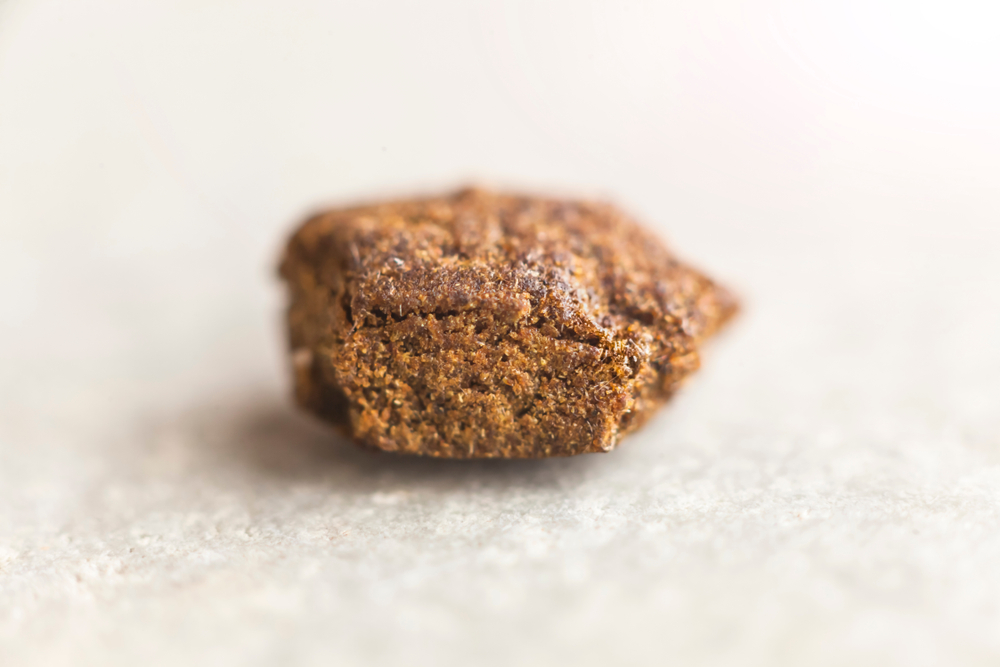
Hashish is a cannabis concentrate. It is wonderful stuff that you can crumble and put in a joint or smoke in a bowl. You can buy it from a dealer, but did you know that you can also make it relatively easily yourself? You don’t need that much at all. There is even a method that requires no tools at all, just your hands! Read on and make your own hash! In this article we’ll discuss two methods, namely making hash using a sieve and making hash using a blender.
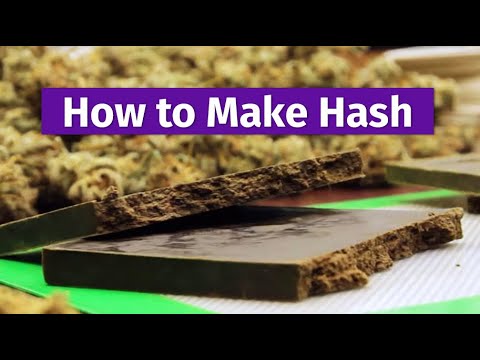
Make hashish with a sieve
There are different ways to make hashish. For example, you can roll your plant material under your hands. Because you press hard and roll, the trichomes stick to your hands. A sticky layer will remain on your hands, and if you carefully scrape it off, you will have hash!
Rolling is a simple method because you don’t need anything for it. Well, of course, you need plant material. You can use stems, leaves, and flower tops for it. In fact, everything that remains after harvesting still has trichomes. There are trichomes on almost all parts of a weed plant. Sometimes there aren’t that many, but by rolling everything under your hands, enough sticks. Suppose you don’t like this method, for example, because you don’t want to get your hands dirty, there are many more ways to make hash. So read on, and discover other ways that might be of interest to you. Keep in mind that every way to make hash produces a different kind of hash. A certain method influences the structure, for example, the hash may end up being a bit dry or very sticky. And how strong the hashish is can differ. But that is just the fun. With every method you use, the end product is about the same, since it falls into the hashish category. Yet there are differences in the final product that make it interesting again. Certainly, if you make it yourself, you can vary nicely. That way you learn what you like best. Anyway, we want to teach you a method here that is very simple. The only thing you need for it is a sieve. This method is also called ‘flat screening’. Use a strainer that you can easily hold in your hand, the smaller the holes, the better and purer your final product will be. We assume that you are looking for quality, not quantity!
It is best to first put your weed in the freezer for a while. That will help to get the trichomes off your weed plant better. When you have done that, remove the plant material from the freezer. Make sure you have a clean work table or surface. Put the plant material on the sieve and rub it very carefully back and forth. By rubbing the plant material remains on the sieve and the trichomes fall through the fine holes of the sieve. The trichomes fall on the surface under the sieve. Continue to sift for a while, until no more trichomes fall and the plant material is ‘finished’.
Making hashish in a blender
Of all the ways to make hashish, this is perhaps the coolest. And it is not only very fun to do, but it is also very simple. You probably have all the materials for this method at home. You need a blender and a strainer (sieve) for it. Are you ready to make your own fresh, wonderfully smelling, homemade hashish? Here we go!
Put all the cutting residues that you have left after pruning or harvesting in a blender. Now fill the blender with water so that all the plant material is just covered with water. Wait, don’t start mixing right away. We appreciate your enthusiasm! But ice must first be added. Fill the blender completely with ice. Now it’s time to mix. First do it a bit quietly, so that the ice can crush, and then turn the blender knob all the way to high-speed mode, and mix for a minute at the highest setting. You now get a kind of green soup, a bit of a slimy mixture. Now take the sieve and keep it above a jug or a pot. Pour the green mixture through the sieve into the jug and let it rest for about an hour. You now see something very nice happening: the trichomes form on the bottom. If you want to see this, you must take a glass can. Then you can see it all happen. Now comes a precise job, which you have to handle carefully. Drain part of the water, but watch out, make sure you don’t wash away the trichomes because you want them! Now fill the pot again with very cold water and let it rest for 10 minutes. Drain part of the water again and be careful not to wash away the trichomes. You have to be patient now, and not make it easy for yourself. Just wait and restrain yourself for a moment! For good quality hashish, you have to repeat this process about 6 times.
We will now make real hashish
Did you do all this? Beautiful! Then we will now make real hashish. Start by carefully draining as much water as possible from the jug (or pot, depending on what you use). So don’t rinse the trichomes away, otherwise, you can start over again, and you will have better things to do! Now grab a filter. A coffee filter works best. Carefully pour the solution left in the jug through the coffee filter. Now all the water is washed away and a sticky mass remains in the filter. Tadaaa, there is your homemade hash! Congratulations! First, gently squeeze the filter to remove even more water, pressing the hashish slightly. You can now let it dry and then smoke it in a bowl or joint, just what you like best. It is not necessary to first heat the hash or compress it even further. Enjoy!
Cannabis FAQ
Expert Lighting Tips For Successful Indoor Growing Weed
Published
4 months agoon
November 22, 2024By
admin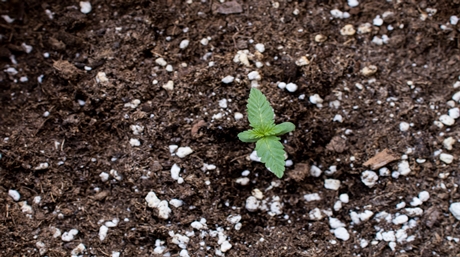
Cultivating Your Green Haven Year-Round
As the cold weather approaches and outdoor growers retreat indoors to continue their cultivation throughout the winter, the importance of choosing the right lighting for indoor growing becomes paramount. With a myriad of illumination options available, it’s easy to feel overwhelmed. But fear not, for we are here to guide you through the process, helping you create a thriving indoor garden that will yield bountiful results throughout the year.
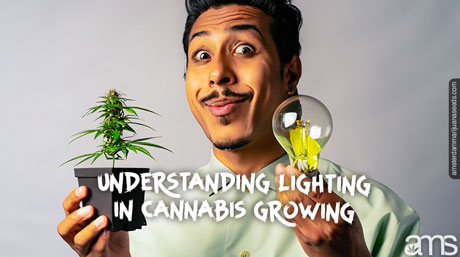
Illuminate the Path to Successful Indoor Growing Weed
When it comes to indoor cultivation, lighting is undeniably one of the most crucial factors to consider. Not only does lighting play a vital role in manipulating the natural light cycles of marijuana plants, but it also serves as, the catalyst for photosynthesis—the process by which plants create their own, nourishment. Within the leaves of cannabis plants, chlorophyll acts as a light-absorbing pigment, harnessing light energy to convert water and carbon dioxide into food sugar.
The process of photosynthesis is directly influenced by the color, duration, and intensity of light received by the plant. By strategically altering these factors, you have the power to impact your plant’s food production. Cool blue and warm orange are examples of illumination colors that enhance a plant’s ability to generate sustenance. During the summer months, cool light is most beneficial, promoting dense and well-shaped growth. In contrast, warm-colored light during the fall harvest months induces the development of vibrant flowers. In essence, cool colors stimulate growth, while warm colors act as catalysts for flowering.
Embracing Darkness: The Role of Light Cycles
Beyond light color, the duration of light exposure your cannabis plant receives is of utmost importance. By adhering to specific light cycles, you can ensure optimal growth and flowering. During the growth phase, it is recommended to provide your young plants with 18 hours of light and 6 hours of uninterrupted darkness. This extended period of light exposure fuels vigorous vegetative growth. However, once the plant is ready to flower, adjusting the light cycle to 12 hours of light and 12 hours of darkness triggers the flowering process.
The flexibility of indoor cultivation allows you to customize the light cycle based on your preferences and the needs of your plants. This is especially beneficial during the winter months when maintaining a consistent temperature is challenging. By utilizing the ability to leave the lights on during the night and off during the day, you can create a more stable environment, minimizing temperature fluctuations and providing a nurturing space for your plants.
Choosing the Right Lamps: Illuminating Your Indoor Oasis
Selecting the appropriate lamps for your indoor grow room requires careful consideration of various factors. Firstly, assess the amount of light intensity required for your plants’ growth stage. Secondly, consider the size of your grow room, as this will determine the number and placement of lamps needed. It is essential to evaluate the electrical capabilities of the room to ensure that the chosen lamps can be adequately powered. Additionally, contemplate the preferred light color that aligns with the specific growth stage and desired outcomes. Lastly, establish a budget and compare the prices of different illumination options, keeping in mind that lighting systems are long-term investments that can incur higher costs due to their power consumption.
Fluorescent lamps with a broad color spectrum are particularly beneficial for seedlings that have not yet developed large leaves. These lamps provide ample light and support the initial stages of growth.
Indoor growers seeking maximum intensity per watt would benefit from high-pressure sodium lamps (HPS). Known for their efficiency and cost-effectiveness, HPS lamps emit a warm orange glow, which triggers plant hormones that facilitate bud development and flowering. While HPS lamps excel at providing warm light, they are less proficient in emitting cool blue light. Consequently, they are best suited for the flowering stage of growth. If you were to use an HPS bulb for seedlings, it is advisable to keep the lamps at a lower height (approximately 80 cm/31.50 inches) to encourage rapid horizontal growth. Early pruning can also help control plant height and prevent excessive stretching.
On the other hand, metal halide lamps (MH) are highly efficient and serve as an excellent primary light source for indoor growers. Emitting one of the brightest cool lights available, MH lamps are ideal for promoting foliage growth and cultivating robust plants. With an average lifespan of 10,000 hours, MH lamps retain their glow for an extended period. However, it is important to note that over time, the energy they emit within the blue range diminishes. Therefore, regular assessment and potential replacement of MH lamps are necessary to maintain optimal illumination conditions.
Expert Tips for Successful Indoor Growing Weed
To ensure the success of your indoor cultivation journey, consider the following tips:
- Maintain Adequate Distance: Pay close attention to the proximity of your plants to the light source. If the lamps are too close, they may cause light burn and damage your precious foliage. Strive to maintain a safe distance between the lamps and plants to avoid such undesirable outcomes.
- Achieve Balance: Provide all your plants with a consistent and equal amount of light. Avoid overcrowding, as taller plants may overshadow their smaller counterparts, depriving them of much-needed light. To overcome this challenge, consider using bins or adjustable platforms to elevate smaller plants closer to the light source, ensuring equitable light distribution.
- Cultivate a Year-Round Bliss: Embrace the advantages of indoor cultivation, relishing a year-round supply of your favorite buds. Although setting up your indoor oasis may seem initially daunting, the rewards will be reaped one bud at a time. With careful attention to illumination, you can create an optimal environment for your plants to thrive regardless of the season.
In conclusion, selecting the ideal illumination system for indoor growing is a decision that warrants thoughtful consideration. By understanding the profound impact of light color, cycle duration, and intensity on your plants, you can make informed choices that maximize yield potential. Whether you opt for fluorescent lamps, high-pressure sodium lamps (HPS), or metal halide lamps (MH), remember to strike a balance and provide optimal conditions for your plants to thrive. Embrace the joys of indoor cultivation and revel in the delights of a bountiful harvest, regardless of the season.

Cannabis Can Help A Sore Throat

Cannabis and the Authoritarian State

As cannabis consumer tastes evolve, industry must look beyond potency

Article: Early 2025 Empire State Psychedelic Policy Roundup

White House Finally Comments On Marijuana Industry

Stop Using Bat Poop to Fertilize Your Weed Plants Immediately, Here is Why…

The History Behind April Fool’s Day

Star signs and cannabis strains: April 2025 horoscopes

Does Comfort Food Actually Help

Connect to cannabis history with three legacy strains from Paradise Seeds

Distressed Cannabis Business Takeaways – Canna Law Blog™

United States: Alex Malyshev And Melinda Fellner Discuss The Intersection Of Tax And Cannabis In New Video Series – Part VI: Licensing (Video)

What you Need to Know

Drug Testing for Marijuana – The Joint Blog

NCIA Write About Their Equity Scholarship Program

It has been a wild news week – here’s how CBD and weed can help you relax

Cannabis, alcohol firm SNDL loses CA$372.4 million in 2022

A new April 20 cannabis contest includes a $40,000 purse

Your Go-To Source for Cannabis Logos and Designs

UArizona launches online cannabis compliance online course
Trending
-

 Cannabis News2 years ago
Cannabis News2 years agoDistressed Cannabis Business Takeaways – Canna Law Blog™
-

 One-Hit Wonders2 years ago
One-Hit Wonders2 years agoUnited States: Alex Malyshev And Melinda Fellner Discuss The Intersection Of Tax And Cannabis In New Video Series – Part VI: Licensing (Video)
-

 Cannabis 1012 years ago
Cannabis 1012 years agoWhat you Need to Know
-

 drug testing1 year ago
drug testing1 year agoDrug Testing for Marijuana – The Joint Blog
-

 Education2 years ago
Education2 years agoNCIA Write About Their Equity Scholarship Program
-

 Cannabis2 years ago
Cannabis2 years agoIt has been a wild news week – here’s how CBD and weed can help you relax
-

 Marijuana Business Daily2 years ago
Marijuana Business Daily2 years agoCannabis, alcohol firm SNDL loses CA$372.4 million in 2022
-

 California2 years ago
California2 years agoA new April 20 cannabis contest includes a $40,000 purse



